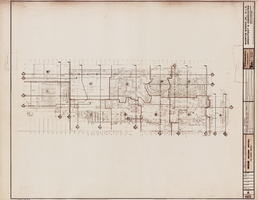Search the Special Collections and Archives Portal
Search Results
Science classroom at Desert Torah Academy, Las Vegas, Nevada: digital photograph, 2016 September 22
Level of Description
Archival Collection
Collection Name: UNLV University Libraries Photographs of the Jewish Community of Southern Nevada
Box/Folder: N/A
Archival Component
Science classroom at Desert Torah Academy, Las Vegas, Nevada: digital photograph, 2016 September 22
Level of Description
Archival Collection
Collection Name: UNLV University Libraries Photographs of the Jewish Community of Southern Nevada
Box/Folder: N/A
Archival Component
Class in session at the Desert Torah Academy, Las Vegas, Nevada: digital photograph, 2016 September 22
Level of Description
Archival Collection
Collection Name: UNLV University Libraries Photographs of the Jewish Community of Southern Nevada
Box/Folder: N/A
Archival Component
Class in session at the Desert Torah Academy, Las Vegas, Nevada: digital photograph, 2016 September 22
Level of Description
Archival Collection
Collection Name: UNLV University Libraries Photographs of the Jewish Community of Southern Nevada
Box/Folder: N/A
Archival Component
Rabbi Shea Harlig with wife Dina, Las Vegas, Nevada: digital photograph, 2016 September 22
Level of Description
Archival Collection
Collection Name: UNLV University Libraries Photographs of the Jewish Community of Southern Nevada
Box/Folder: N/A
Archival Component
Astrid Silva oral history interview
Identifier
Abstract
Oral history interview with Astrid Silva conducted by Monserrath Hernández and Barbara Tabach on April 22, 2019 for the Latinx Voices of Southern Nevada Oral History Project. Astrid Silva was born in Gomez Palacio, Durango in 1988. She immigrated with her mother to the United States in 1992, where they were met by her father before flying to Los Angeles. She recounts her first impression of the United States and her families eventual move to Las Vegas, where she describes her time living in Las Vegas’ west side and struggles she faced being an undocumented student living in Las Vegas. She describes her first meeting with Senator Harry Reid and the friendship that developed afterwards. She has spoken at the Democratic National Convention and has been vocal about her status as a Dreamer. She is currently the Executive Director for DREAM Big Nevada which was established in 2017 in order to provide aid to Nevada’s immigrant families. She writes about her hopes for Dreamers and her continued work in expanding the ways that immigrant families can be helped in an always changing political climate. Subjects discussed include: DACA, Dreamers, Immigrant Rights, and Higher Education.
Archival Collection

Architectural drawing of the MGM Grand Hotel (Las Vegas), key plan sections, May 22, 1972
Date
Archival Collection
Description
Architectural plans for the MGM Grand Hotel (Las Vegas) from 1972. Printed on mylar. The MGM Grand Hotel was sold to Bally's Corporation to become Bally's Las Vegas in 1985. Berton Charles Severson, architect; Brian Walter Webb, architect; Taylor Construction Co.
Site Name: MGM Grand Hotel
Address: 3645 Las Vegas Boulevard South, Las Vegas, NV
Image
Speech at Memorial Services for Dag Hammarskjold, Nevada Southern University, Las Vegas, 1961 September 22
Level of Description
Archival Collection
Collection Name: Howard Cannon Papers
Box/Folder: Box 01 (Speeches)
Archival Component
Speech delivered before the National Association of Air Traffic Specialists, Las Vegas, 1969 September 22
Level of Description
Archival Collection
Collection Name: Howard Cannon Papers
Box/Folder: Box 04 (Speeches)
Archival Component
Nanyu Tomiyasu oral history interview
Identifier
Abstract
Oral history interview with Nanyu Tomiyasu conducted by Andrew Russell on March 22, 1987. In this interview, Tomiyasu discusses his father's large-scale commercial farm in Las Vegas, Nevada and the amount of produce the farm produced through the 1920s. He expands on the impact of the 1922 railroad strike, particularly in regard to the Japanese population in the city. He recounts the general lack of discrimination and segregation against Japanese residents in Las Vegas, how Japanese families integrated with the community and how they maintained their cultural traditions. Later, he begins to discuss the impact of World War II on Japanese in the people living in the western states, Las Vegas' response to its Japanese residents, and how relocation and internment impacted families.
Archival Collection
